Image Segmentation Based on Statistical Confidence Intervals
Abstract
:1. Introduction
2. Image Segmentation Based on Statistical Confidence Interval Approach
- Obtain the standard deviation of the entire image population by considering each pixel intensity as a point-wise datum.
- Separate the original image into sub-images. See Figure 3.
- For each sub-image given by, for instance, for , where i and j is the Cartesian coordinate of a pixel and is the related gray-scale pixel intensity, obtain its sample average value , and again, by considering each pixel intensity as a point-wise datum.
- For each sub-image , for ; if and , then , otherwise , for all i and j in the sub-image domain .
- Reconstruct the Pre-processed image by compositing the above resultant sub-images.
- Apply the above outcome image to the Otsu multivariate threshold process to obtain the final result. See Figure 2.
3. Discussion
4. Materials and Methods
5. Conclusions
Acknowledgments
Author Contributions
Conflicts of Interest
Appendix A. Matlab Programing Code
clear all;
%%%%%%%%%%%%%%%%%%%%%%%%%%%%%%%%%%%%%%%%%%%%%%%%%%%%%%%%%%%%%%%%%%%
% Read the original image and add the simulated Speckle noise %
% and resizing it for simplicity %
%%%%%%%%%%%%%%%%%%%%%%%%%%%%%%%%%%%%%%%%%%%%%%%%%%%%%%%%%%%%%%%%%%%
AG1=double(rgb2gray(imread(’file_name’,’jpeg’)));
AGa=imresize(AG1,[1000 1000]);
AG=imnoise(mat2gray(AGa),’speckle’,0.1);
%%%%%%%%%%%%%%%%%%%%%%%%%%%%%%%%%%%%%%%%%%%%%%%%%%%%%%%%%%%%%%%%%%%
% Obtain the corresponding standard deviation of the whole image %
% and show the noisy image to be processed %
%%%%%%%%%%%%%%%%%%%%%%%%%%%%%%%%%%%%%%%%%%%%%%%%%%%%%%%%%%%%%%%%%%%
[I,J]=size(AG);
n=I*J;
x=zeros(n,1);
k=1;
for j=1:J
for i=1:I
x(k,1)=AG(i,j);
k=k+1;
end
end
s=std(x(:,1));
figure(1);imshow(AG);
title({[’Original Image’];[’\sigma= ’ num2str(s)]});
%%%%%%%%%%%%%%%%%%%%%%%%%%%%%%%%%%%%%%%%%%%%%%%%%%%%%%%%%%%%%%%%%%%
% Make the image partition into ’np(=52)’ sub-images and realize %
% the corresponding pre-processing steps %
%%%%%%%%%%%%%%%%%%%%%%%%%%%%%%%%%%%%%%%%%%%%%%%%%%%%%%%%%%%%%%%%%%%
np=52;
nr=ceil(I/np)-1;
nc=ceil(J/np)-1;
for n=1:np
for m=1:np
aux=((AG(1+nr*(n-1):nr*(n)+1,nc*(m-1)+1:nc*(m)+1)));
xbar=mean(mean(aux));
[ia,ja]=size(aux);
for j=1:ja
for i=1:ia
if (aux(i,j)<xbar+1.96*s/sqrt(ia*ja))&...
(aux(i,j)>xbar-1.96*s/sqrt(ia*ja))
aux(i,j)=aux(i,j);
else
aux(i,j)=xbar;
end
end
end
A3(1+nr*(n-1):1+nr*(n),1+nc*(m-1):1+nc*(m))=aux;
end
end
%%%%%%%%%%%%%%%%%%%%%%%%%%%%%%%%%%%%%%%%%%%%%%%%%%%%%%%%%%%%%%%%%%%
% Show the pre-processed image %
%%%%%%%%%%%%%%%%%%%%%%%%%%%%%%%%%%%%%%%%%%%%%%%%%%%%%%%%%%%%%%%%%%%
figure(4);
imshow(A3);title(’Pre-processed Image by using our IC method’);
%%%%%%%%%%%%%%%%%%%%%%%%%%%%%%%%%%%%%%%%%%%%%%%%%%%%%%%%%%%%%%%%%%%
% Applied the corresponding Otsu segmentation method to %
% our pre-processed image and show the final result %
%%%%%%%%%%%%%%%%%%%%%%%%%%%%%%%%%%%%%%%%%%%%%%%%%%%%%%%%%%%%%%%%%%%
level=multithresh(A3,3);
Aaux=imquantize(A3,level);
mymap = [1 0 0;0 1 0;1 1 1;1 1 0];
colormap(mymap);
rgbImage = ind2rgb((Aaux),mymap);
figure(7);subplot(1,2,1);
imshow(rgbImage);title(’Processed Image: Our Design’);
%%%%%%%%%%%%%%%%%%%%%%%%%%%%%%%%%%%%%%%%%%%%%%%%%%%%%%%%%%%%%%%%%%%
% Applied the corresponding Otsu segmentation method to %
% the original image and show its result (for comparison) %
%%%%%%%%%%%%%%%%%%%%%%%%%%%%%%%%%%%%%%%%%%%%%%%%%%%%%%%%%%%%%%%%%%%
level=multithresh(AG,3);
Aaux=imquantize(AG,level);
mymap = [1 0 0;0 1 0;1 1 1;1 1 0];
colormap(mymap);
rgbImage = ind2rgb((Aaux),mymap);
subplot(1,2,2);
imshow(rgbImage);title(’Processed Image: Ref. Method’);
%%%%%%%%%%%%%%%%%%%%%%%%%%%%%%%%%%%%%%%%%%%%%%%%%%%%%%%%%%%%%%%%%%%
% END %
%%%%%%%%%%%%%%%%%%%%%%%%%%%%%%%%%%%%%%%%%%%%%%%%%%%%%%%%%%%%%%%%%%%
References
- Gonzalez, R.C.; Woods, R.E. Digital Image Processing, 2nd ed.; Pearson Education: London, UK, 2002. [Google Scholar]
- Castleman, K.R. Digital Image Processing, 2nd ed.; Prentice Hall: Upper Saddle River, NJ, USA, 1996. [Google Scholar]
- Sezgin, M.; Sankur, B. Survey over image thresholding techniques and quantitative performance evaluation. J. Electron. Imaging 2004, 13, 146–168. [Google Scholar]
- Khan, M.W. A survey: Image segmentation techniques. Int. J. Future Comput. Commun. 2014, 3, 89. [Google Scholar] [CrossRef]
- Freixenet, J.; Muñoz, X.; Raba, D.; Martí, J.; Cufí, X. Yet another survey on image segmentation: Region and boundary information integration. In Computer Vision—ECCV 2002; Springer: Berlin/Heidelberg, Germany, 2002; pp. 21–25. [Google Scholar]
- Zaidi, H.; El Naqa, I. PET-guided delineation of radiation therapy treatment volumes: A survey of image segmentation techniques. Eur. J. Nucl. Med. Mol. Imaging 2010, 37, 2165–2187. [Google Scholar] [CrossRef] [PubMed]
- Goh, T.Y.; Basah, S.N.; Yazid, H.; Safar, M.J.A.; Saad, F.S.A. Performance analysis of image thresholding: Otsu technique. Measurement 2018, 114, 298–307. [Google Scholar] [CrossRef]
- Arifin, A.Z.; Asano, A. Image segmentation by histogram thresholding using hierarchical cluster analysis. Pattern Recognit. Lett. 2006, 27, 1515–1521. [Google Scholar] [CrossRef]
- Dirami, A.; Hammouche, K.; Diaf, M.; Siarry, P. Fast multilevel thresholding for image segmentation through a multiphase level set method. Signal Process. 2013, 93, 139–153. [Google Scholar] [CrossRef]
- Kirk, T.; Panzera, D.; Anamalay, R.; Xu, Z. Computer image analysis of wear debris for machine condition monitoring and fault diagnosis. Wear 1995, 181, 717–722. [Google Scholar] [CrossRef]
- Mujica Delgado, L.E.; Ruiz Ordóñez, M.; Acho Zuppa, L.; Alférez Baquero, E.S.; Tutivén Gálvez, C.; Vidal Seguí, Y.; Rodellar Benedé, J. Texture analysis for wind turbine fault detection. In Proceedings of the 8th European Workshop on Structural Health Monitoring (EWSHM 2016), Bilbao, Spain, 5–8 July 2016; pp. 1–10. [Google Scholar]
- Marcin, C. Malignant and Benign Mass Segmentation in Mammograms Using Active Contour Methods. Symmetry 2017, 9, 277. [Google Scholar] [CrossRef]
- Zhang, H.; Fritts, J.E.; Goldman, S.A. Image segmentation evaluation: A survey of unsupervised methods. Comput. Vis. Image Underst. 2008, 110, 260–280. [Google Scholar] [CrossRef]
- Noble, J.A.; Boukerroui, D. Ultrasound image segmentation: a survey. IEEE Trans. Med. Imaging 2006, 25, 987–1010. [Google Scholar] [CrossRef] [PubMed]
- Senthilkumaran, N.; Rajesh, R. Edge detection techniques for image segmentation-a survey of soft computing approaches. Int. J. Recent Trends Eng. 2009, 1, 250–254. [Google Scholar]
- Sarkar, S.; Das, S.; Chaudhuri, S.S. A multilevel color image thresholding scheme based on minimum cross entropy and differential evolution. Pattern Recognit. Lett. 2015, 54, 27–35. [Google Scholar] [CrossRef]
- Bruce, J.; Balch, T.; Veloso, M. Fast and inexpensive color image segmentation for interactive robots. In Proceedings of the IEEE/RSJ International Conference on Intelligent Robots and Systems (IROS 2000), Takamatsu, Japan, 31 October–5 November 2000; Volume 3, pp. 2061–2066. [Google Scholar]
- Tobias, O.J.; Seara, R. Image segmentation by histogram thresholding using fuzzy sets. IEEE Trans. Image Process. 2002, 11, 1457–1465. [Google Scholar] [CrossRef] [PubMed]
- Otsu, N. A threshold selection method from gray-level histograms. IEEE Trans. Syst. Man Cybern. 1979, 9, 62–66. [Google Scholar] [CrossRef]
- Devore, J.L. Probability and Statistics for Engineering and the Sciences; Cengage Learning: Boston, MA, USA, 2011. [Google Scholar]
- Zhang, J.; Lin, G.; Wu, L.; Cheng, Y. Speckle filtering of medical ultrasonic images using wavelet and guided filter. Ultrasonics 2016, 65, 177–193. [Google Scholar] [CrossRef] [PubMed]
- Xu, Z.; Shi, Q.; Chen, Y.; Feng, W.; Shao, Y.; Sun, L.; Huang, X. Non-Stationary Speckle Reduction in High Resolution SAR Images. Digit. Signal Process. 2018, 73, 72–82. [Google Scholar] [CrossRef]
- Elyasi, I.; Pourmina, M.A.; Moin, M.S. Speckle reduction in breast cancer ultrasound images by using homogeneity modified bayes shrink. Measurement 2016, 91, 55–65. [Google Scholar] [CrossRef]



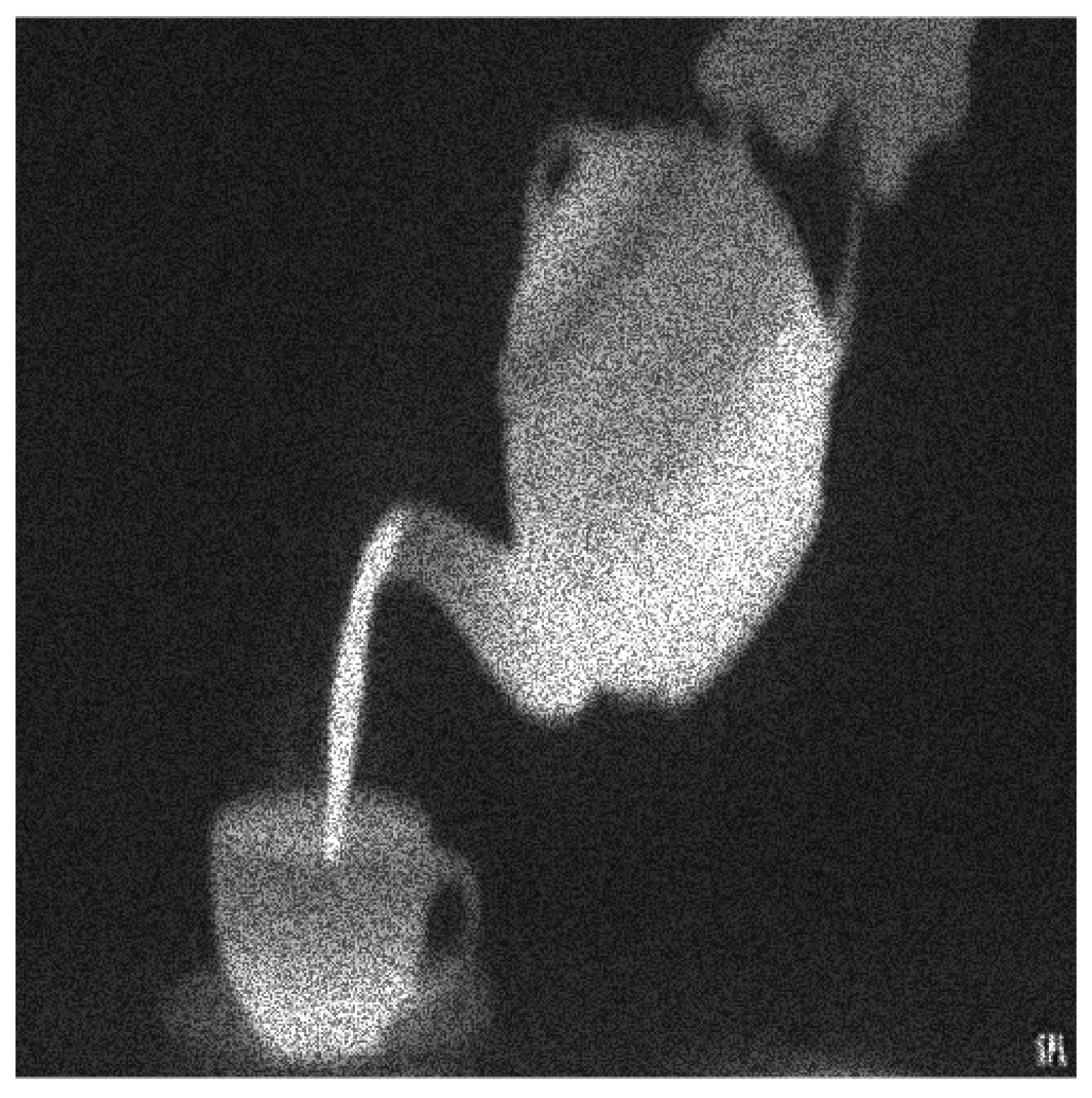
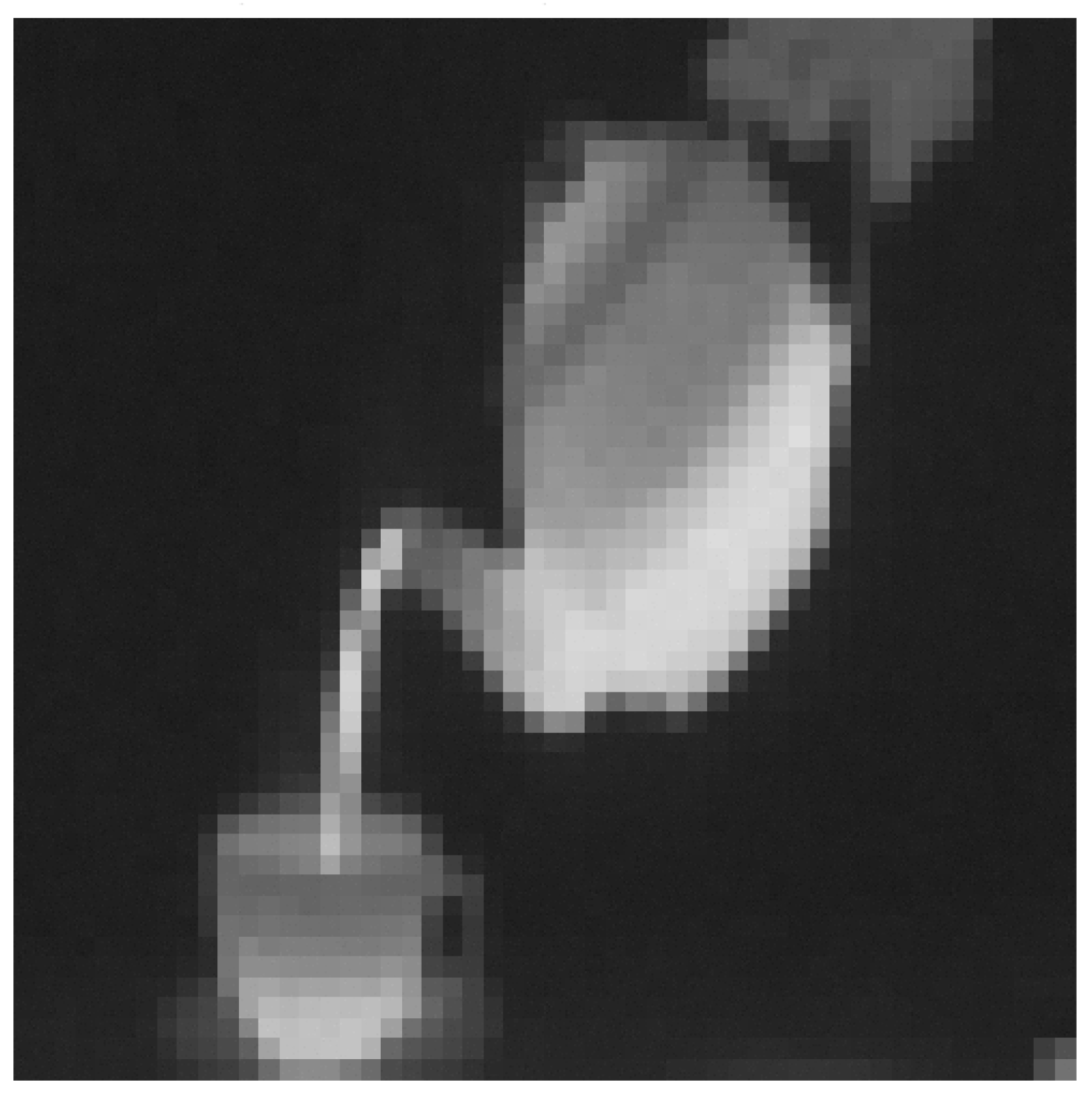
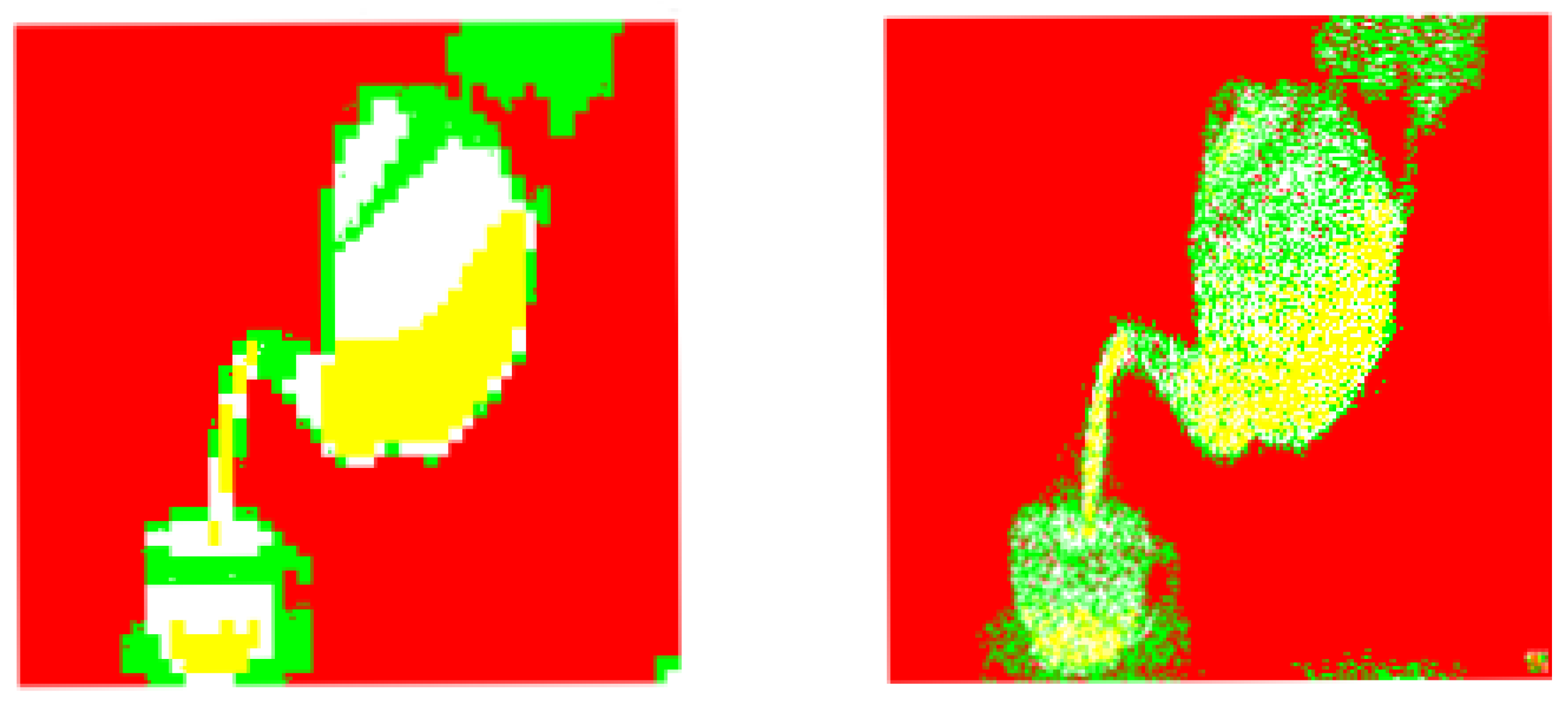
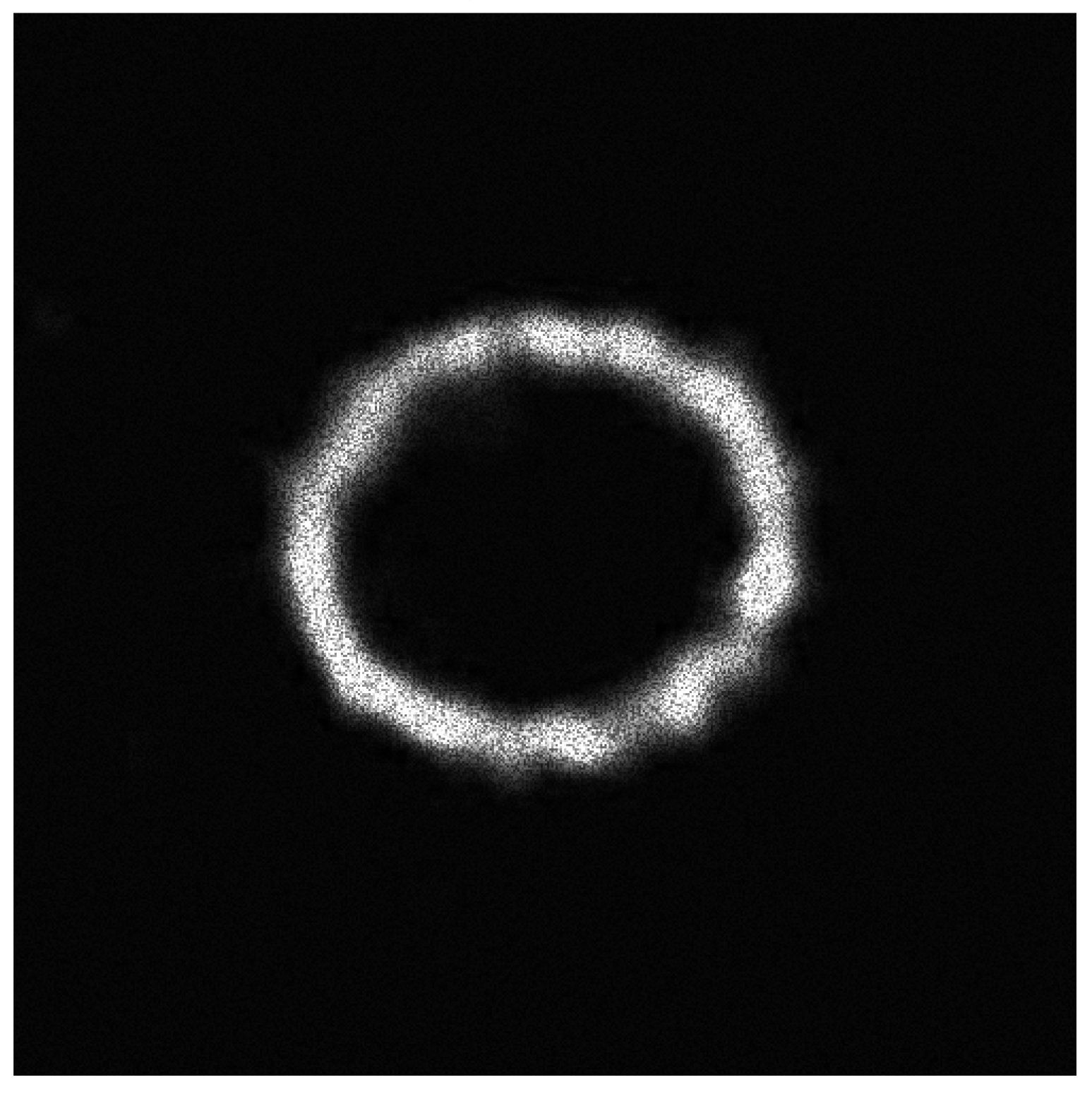
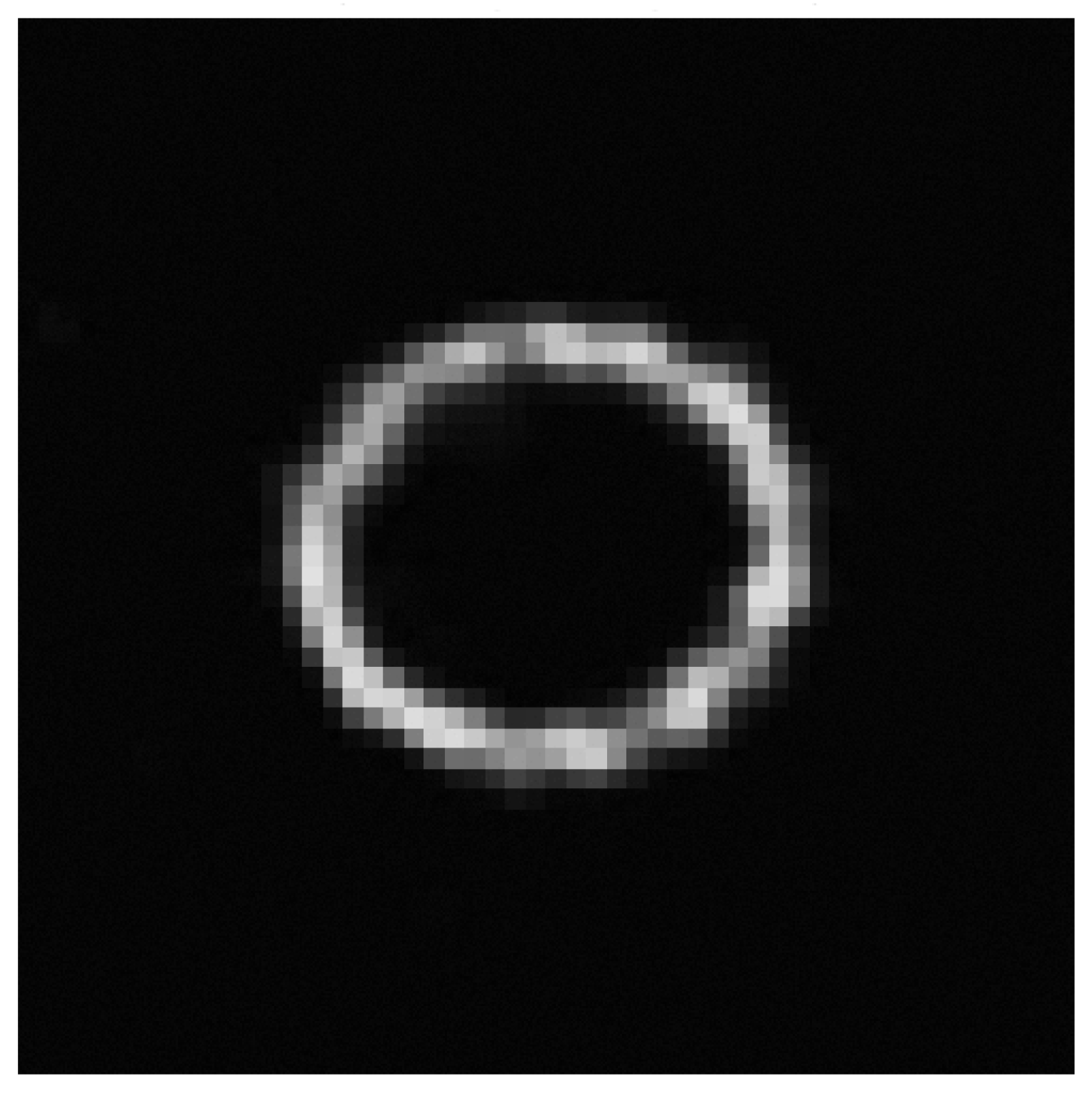
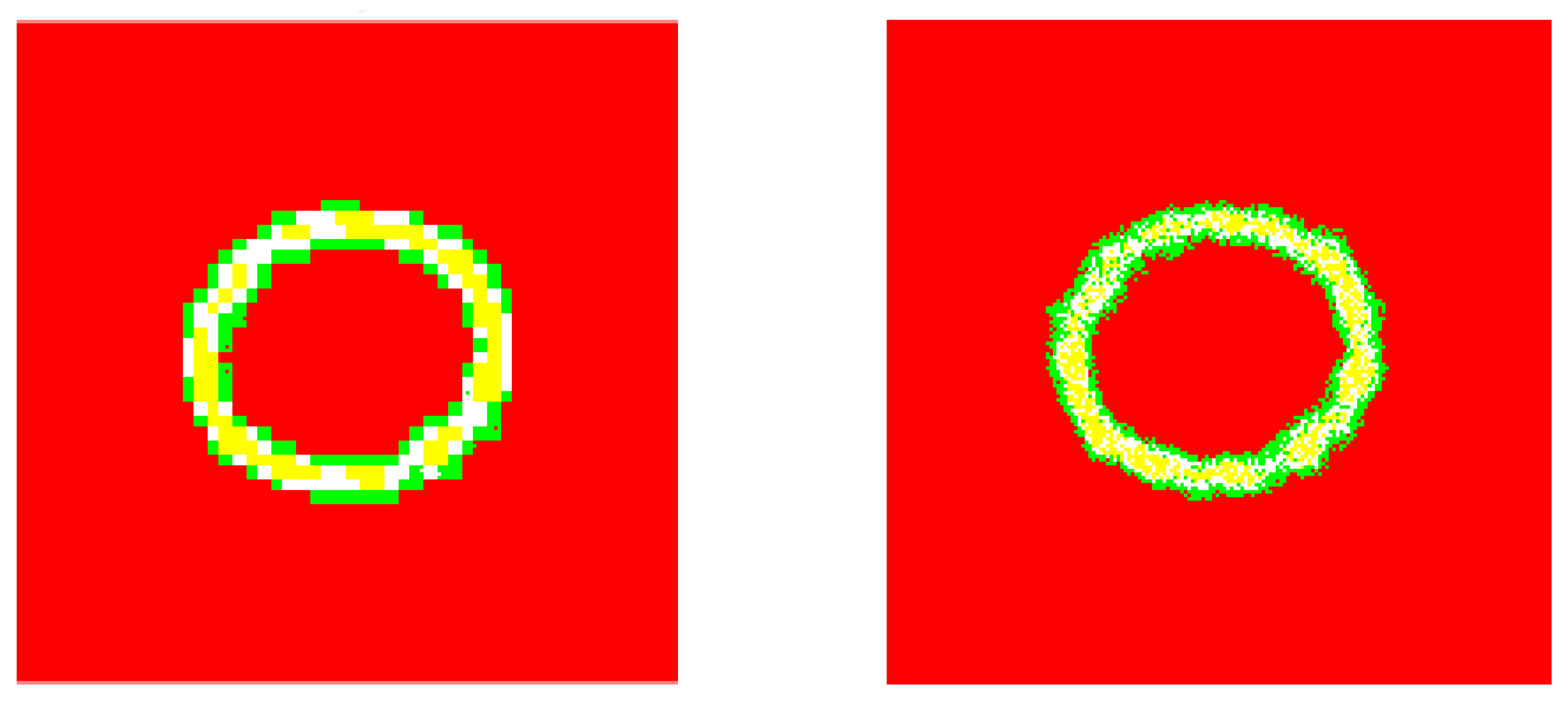
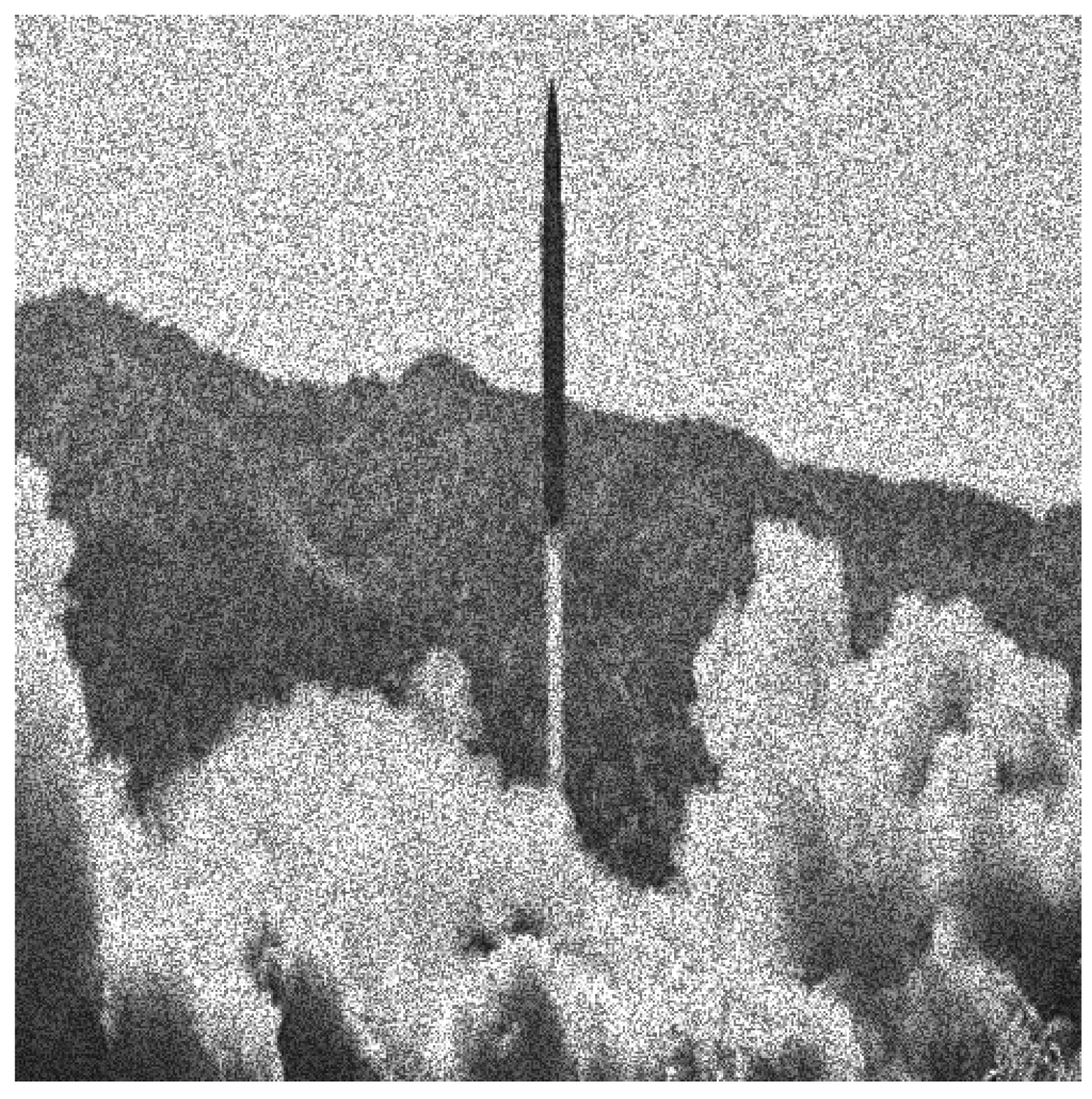
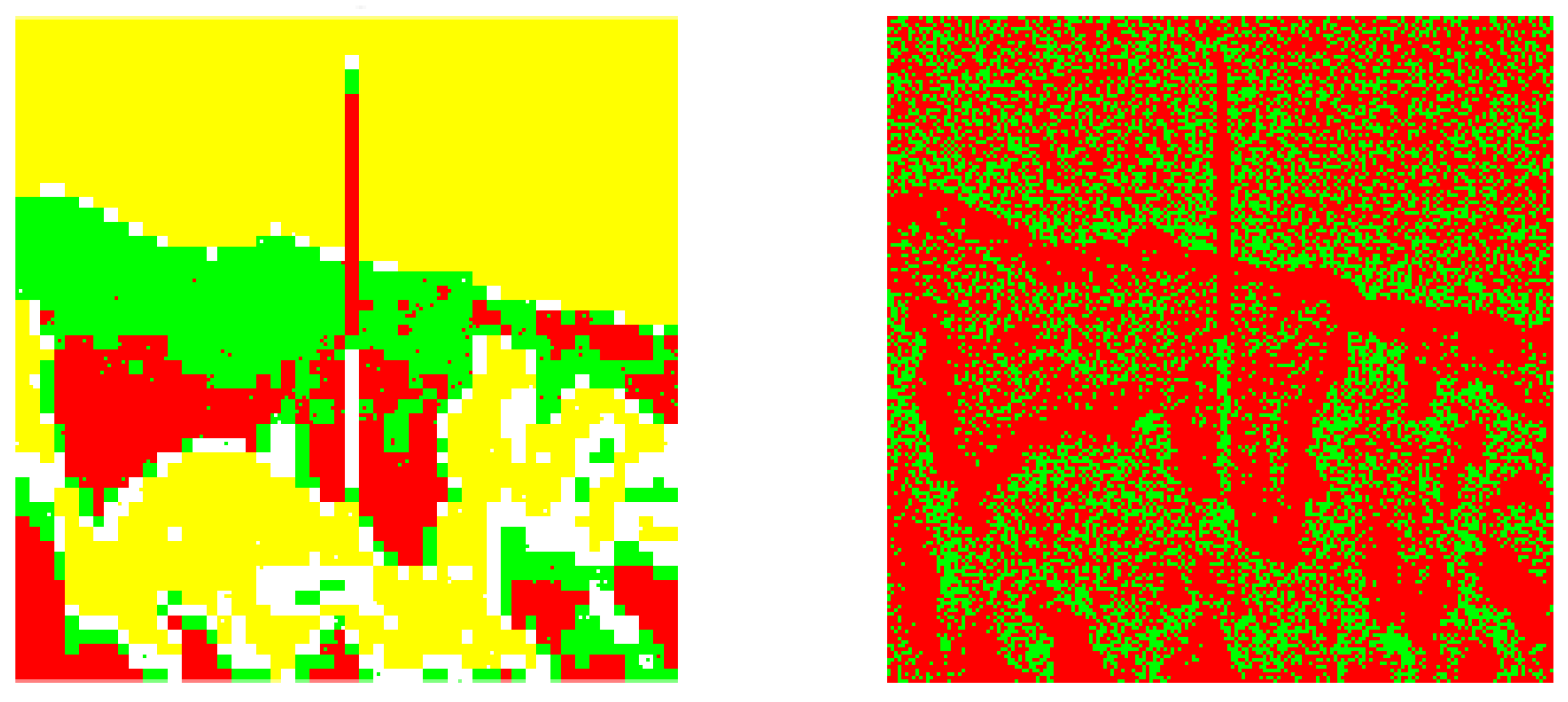
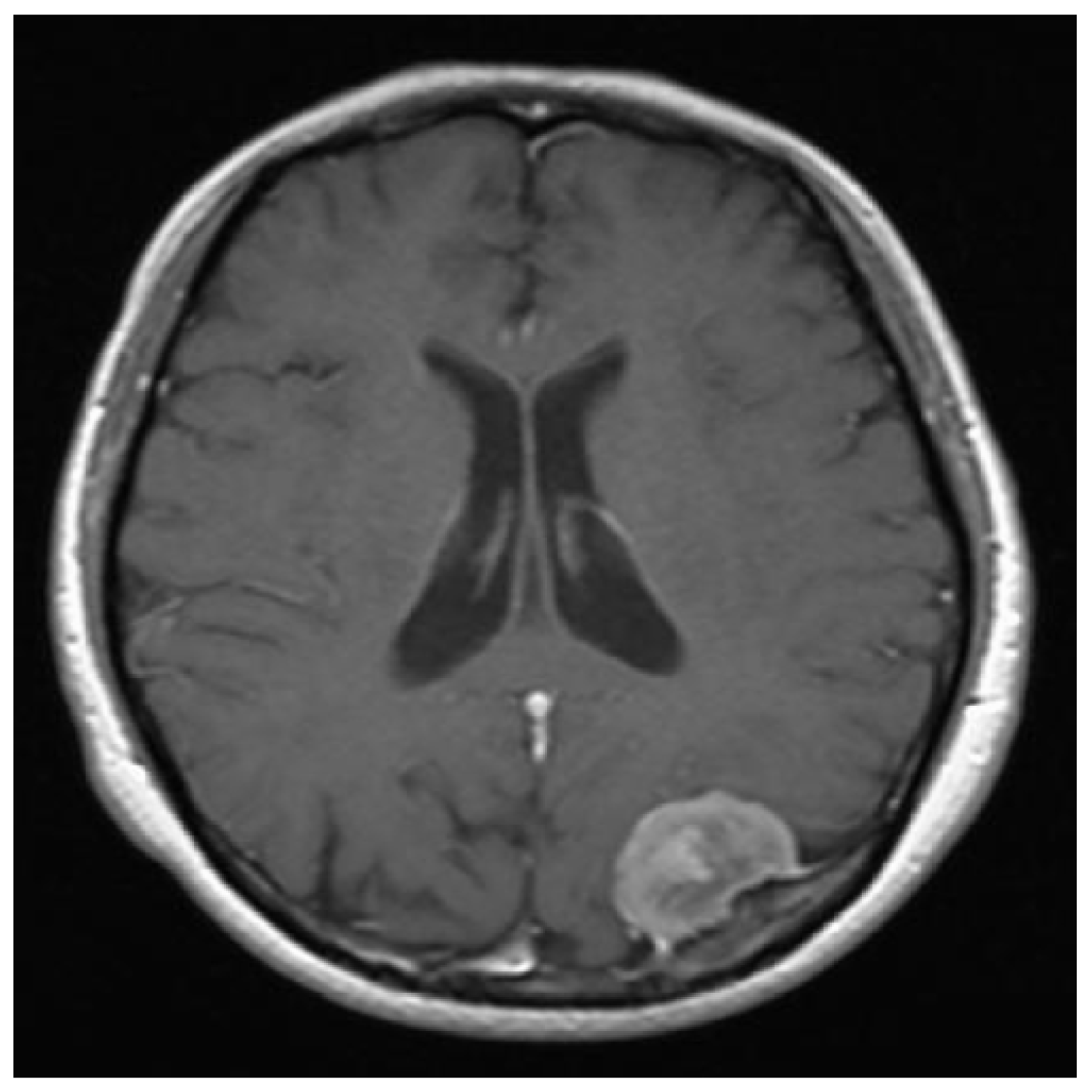


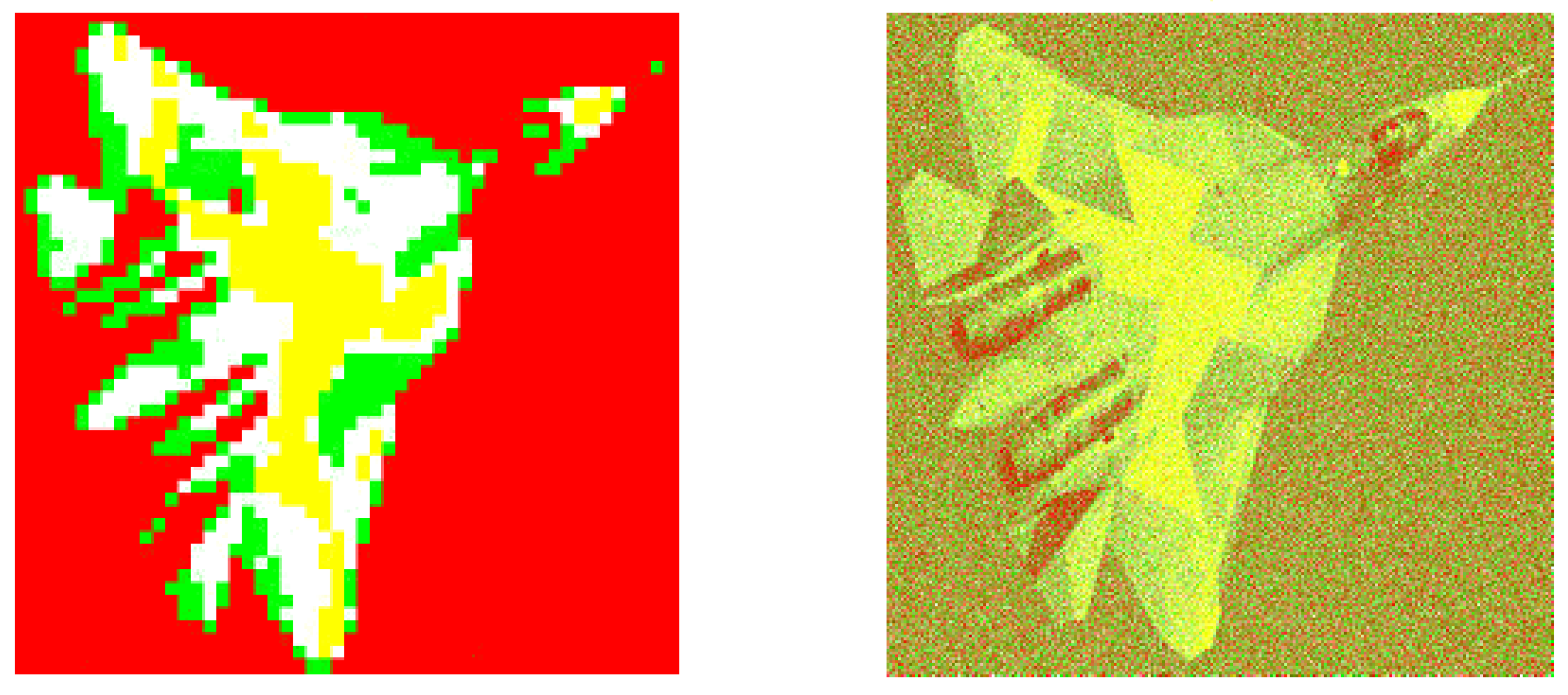
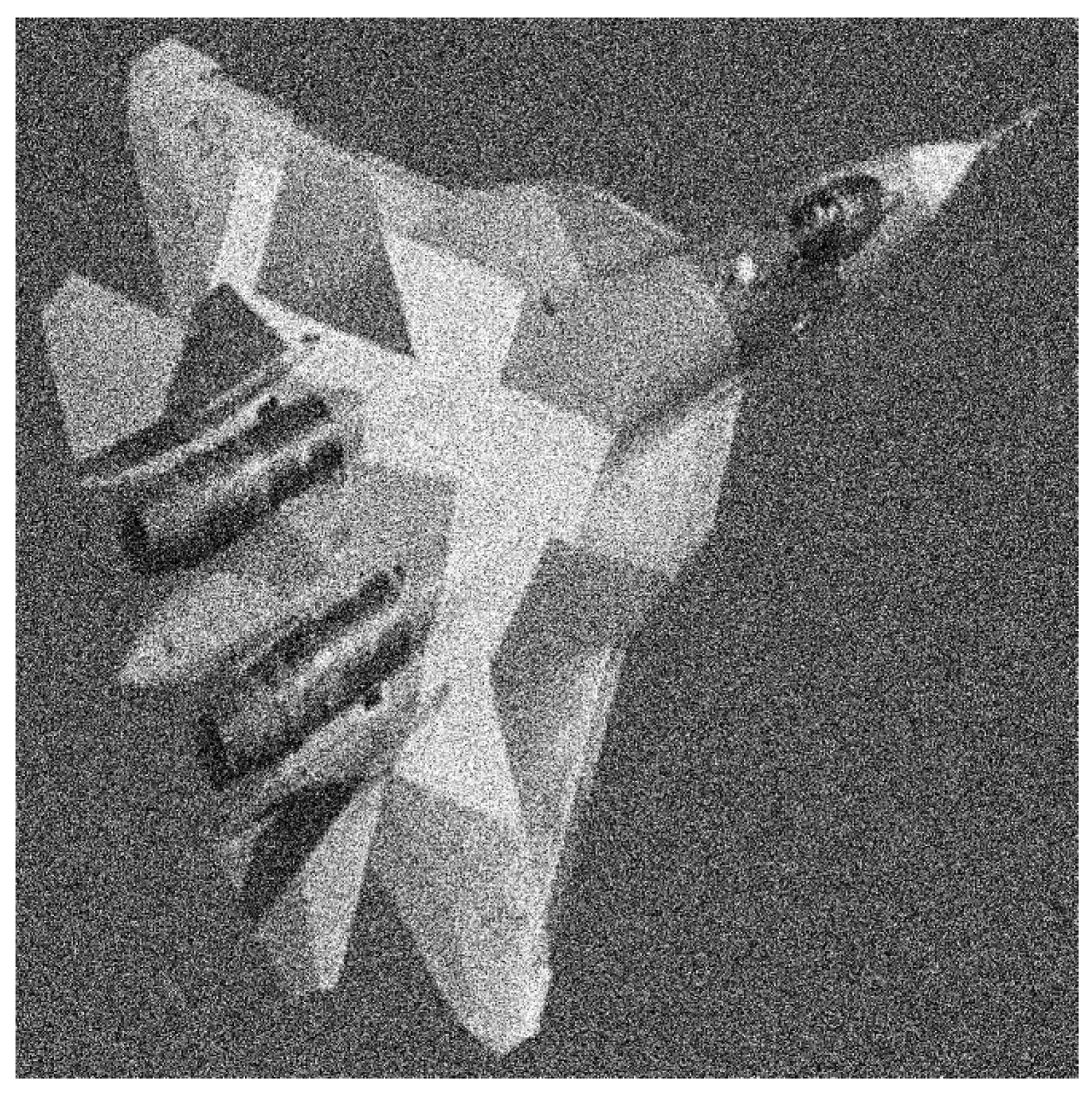
© 2018 by the authors. Licensee MDPI, Basel, Switzerland. This article is an open access article distributed under the terms and conditions of the Creative Commons Attribution (CC BY) license (http://creativecommons.org/licenses/by/4.0/).
Share and Cite
Buenestado, P.; Acho, L. Image Segmentation Based on Statistical Confidence Intervals. Entropy 2018, 20, 46. https://doi.org/10.3390/e20010046
Buenestado P, Acho L. Image Segmentation Based on Statistical Confidence Intervals. Entropy. 2018; 20(1):46. https://doi.org/10.3390/e20010046
Chicago/Turabian StyleBuenestado, Pablo, and Leonardo Acho. 2018. "Image Segmentation Based on Statistical Confidence Intervals" Entropy 20, no. 1: 46. https://doi.org/10.3390/e20010046




